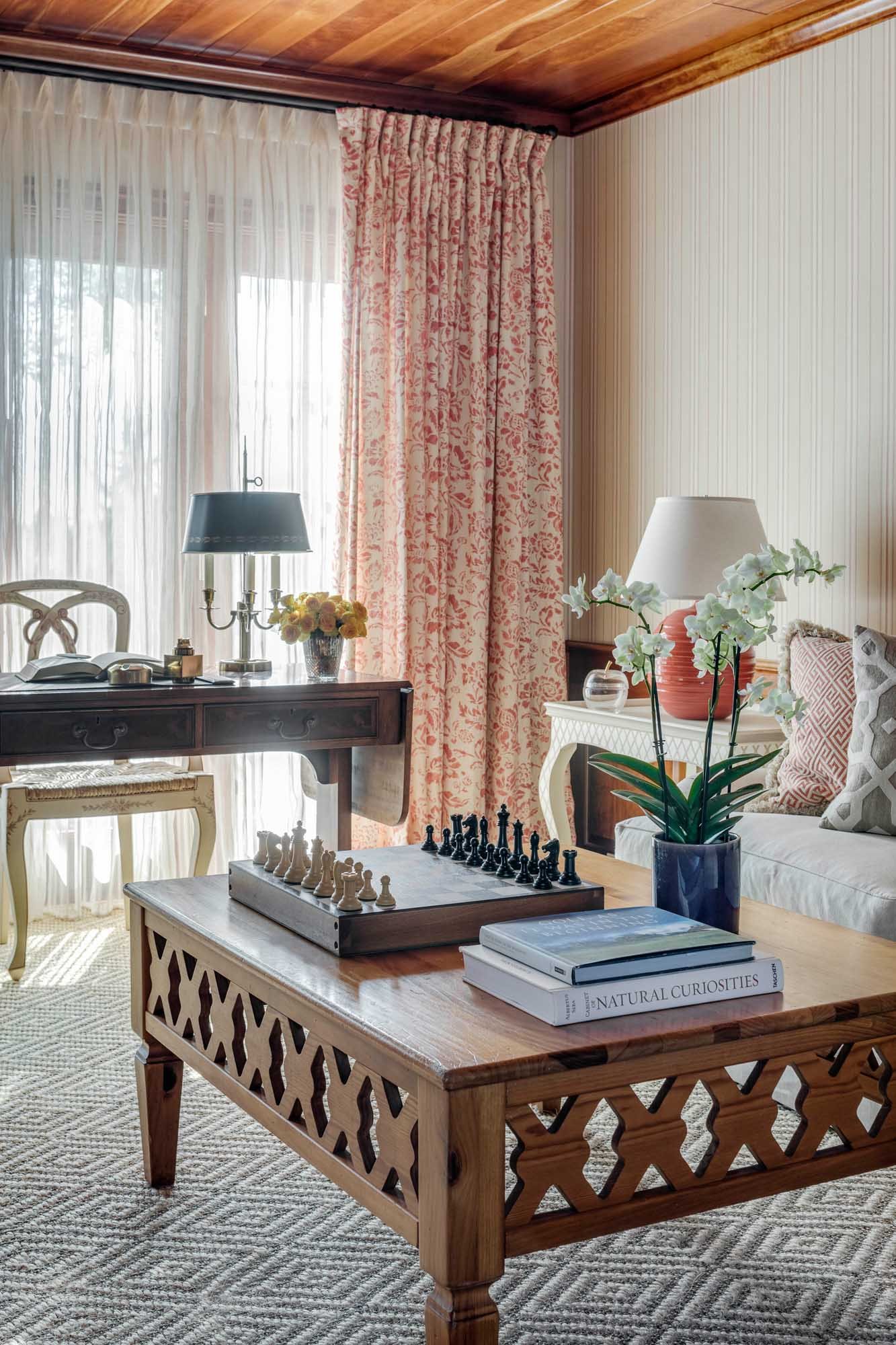The Key to Timeless Design is Love
Charles Spada, the current, unofficial Dean of the New England interior design community, said he recently visited a project he designed 30 years ago, and he was pleased to say, “It was as fresh as ever.” That is the best definition of timeless design we can cite. When our interiors still feel vital and cherished, they’ve achieved a timeless, ageless quality. If, on the other hand, our interiors feel stiff and dated, then we know it’s time for a refresh.
A design becomes evergreen when it includes beloved, iconic pieces and truly reflects the personality and lifestyle of the client. A room that is personal, comfortable, and incorporates high-quality items will stand the test of time. Interiors age more quickly when they are based on trends or reflect recent marketing.
My mantra: “You have to know the rules in order to break them.” Paying attention to scale, proportion, and time-tested interior design principles provides a foundation for each project, but the solutions to any design challenge are limitless (or limited only by availability and budget).
The creative process allows me to draw on my experience as a fine artist as well as my experience in the fashion industry. I’ve been referred to as The Colorful Classicist, using a variety of hues, textures, and shapes to bring our compositions to life in dynamic, refined, and interesting ways.
We thought a lot about the importance of shapes in the music room at an Arts & Crafts home in Boston. The grand piano provided inspiration to reiterate the curves of the instrument with a custom sofa that counterbalances it—serving as a comfortable front-row seat at an intimate music club. The peacock blue wool velvet upholstery has a lovely presence juxtaposed with myriad hues of sand and cream. When a piece feels like the right fit for the setting, although it might reflect a current trend, we believe it will have staying power, especially if the client loves it.
One of the reasons Mr. Spada still loved the space he designed 30 years ago is because of the custom millwork. “The bookshelves and moldings have a classic appeal that does not go out of style,” he said. Knowing how to balance all of the elements of a room is what separates the best interior designers from the rest.
MIXING STYLES AND THE IMPORTANCE OF EDITING
Even in modern settings, the Dane Austin Design team adds elements of surprise—that might include a vintage piece of furniture or art. In more traditional settings, unexpected modern elements mix into the design to create je ne sais quoi - that indefinable quality. You know it when you see it.
A colleague - interior designer, Michael Carter - was recently asked about using animal prints, which are very much in vogue again. His answer: animal prints are a staple. They never go out of style - if you love them. He does.
The recurring theme here: incorporating what the client loves. However, to an untrained eye, too much of a good thing can be too much. Hiring an interior designer helps with the editing process. Curating what is truly meant to be in any given space is part of timeless design. Even in the most maximalist designs, balancing the components is the key to intriguing interiors versus overly done.
I recently completed the interior and exterior design of our own home. One of the challenges for an interior designer curating their own space: knowing all of the choices available, and then carefully selecting what belongs, while forgoing so many other wonderful possibilities. At times it can be easier to select and curate for clients than for myself. But using the same rule that we use with our clients - love it or leave it - we are thrilled with the finished design.



